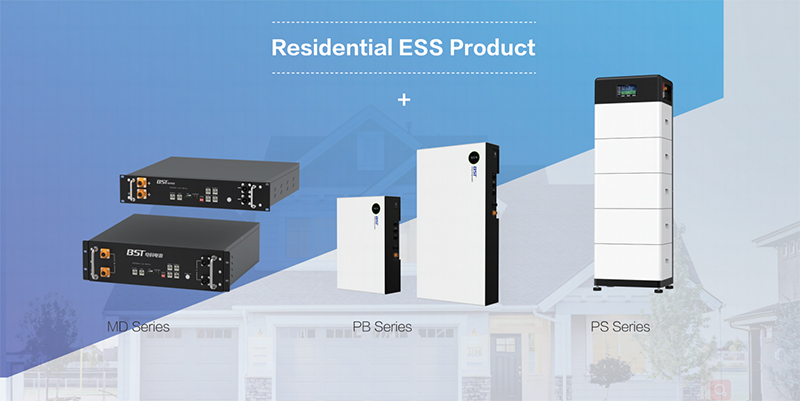Lithium batteries have become the core of modern portable power—found in mobile phones, power tools, electric vehicles, and solar energy storage systems. While they offer high energy density and long cycle life, their performance and safety can degrade significantly if not stored properly, especially over long periods.
In this guide, we’ll analyze from multiple dimensions how to store lithium batteries for long-term use. Whether you’re a consumer, a maintenance engineer, or a procurement manager in the B2B market, this article provides the practical insights needed to protect your lithium battery investment.

1. Understand Lithium Battery Chemistries and Their Storage Requirements
Before setting storage conditions, it’s important to understand the type of lithium battery you’re dealing with:
| Battery Type | Application Examples | Storage Sensitivity |
|---|---|---|
| Li-ion (Lithium-ion) | Laptops, EVs, drones | Moderate |
| LiFePO4 | Solar energy systems, RVs, backup power stations | Very Stable |
| Li-Po (Polymer) | Smartphones, RC toys, compact wearable devices | Highly Sensitive |
Key Takeaway: While all lithium batteries benefit from similar storage principles, LiFePO4 batteries are the most stable for long-term storage, while Li-Po batteries are the most delicate.
2. Maintain Proper Storage Temperature
Temperature plays a critical role in lithium battery health:
- Ideal Long-Term Storage Temperature:
- Short-term (less than 1 month): 0°C–35°C (32°F–95°F)
- Long-term (1–12 months): 10°C–25°C (50°F–77°F)
Avoid:
- Below 0°C (32°F): Can freeze electrolytes and degrade performance
- Above 45°C (113°F): Causes electrolyte breakdown, capacity loss, and fire risk
Tips:
- Store in insulated environments or use climate-controlled cabinets for large batches
- For warehouse inventory, monitor ambient temperature using smart sensors
3. Store at a Safe State of Charge (SOC)
Storing batteries fully charged or completely discharged will significantly shorten their lifespan.
| Battery Type | Ideal Storage Charge Level |
|---|---|
| Li-ion | 40–60% |
| LiFePO4 | 30–50% |
| Li-Po | 40–60% |
Why?
- Full charge (100%) leads to increased chemical stress and faster aging
- Zero charge (0%) risks deep discharge, rendering the battery unrecoverable
Tip: Use a battery charger with SOC control or discharge to the target voltage before storage.
4. Control Humidity and Moisture
Excess humidity is a hidden enemy of lithium batteries. It causes internal corrosion and can trigger short circuits.
- Ideal Relative Humidity: 45%–60%
- Avoid:
- Storing in garages, basements, or outdoors
- Unsealed containers that allow condensation
Solutions:
- Use vacuum-sealed or moisture-proof packaging
- Add desiccant packs or silica gel
- For bulk storage, install dehumidifiers or use nitrogen cabinets
5. Use Safe Packaging and Physical Isolation
Lithium batteries must be physically protected from external forces and short circuits.
Best Practices:
- Store in original packaging or non-conductive plastic boxes
- Keep battery terminals insulated (especially cylindrical batteries like 18650/26650)
- Do not stack batteries haphazardly
- Avoid exposure to metal tools or sharp objects
B2B Tip: For bulk storage, use customized foam-lined battery crates with labeled inventory tracking.
6. Avoid Overcharging and Deep Discharging During Storage
Even while unused, lithium batteries self-discharge over time. Leaving them untouched too long can lead to over-discharge.
- Deep Discharge Risk:
- When voltage drops below cut-off level (~2.5V for Li-ion), batteries can’t recover
- Overcharge Risk:
- Not relevant during storage but avoid connecting to trickle chargers constantly
What to do:
- Recharge to the ideal SOC every 3–6 months
- Use a Battery Management System (BMS) for larger battery banks
7. Limit Storage Duration
Lithium batteries are not meant for indefinite storage. Storage time affects battery capacity.
- <3 Months: Minimal degradation if properly stored
- 3–12 Months: Acceptable for new inventory; requires periodic checks
- >12 Months: Expect slight capacity loss (~3–8% per year), even under ideal conditions
Solution:
- Rotate stock using the FIFO principle (First In, First Out)
- Recondition or cycle batteries yearly to maintain chemistry balance
8. Implement Periodic Maintenance Checks
Schedule regular inspections, especially for industrial or commercial battery stocks.
Checklist every 3–6 months:
- Check voltage levels
- Inspect for swelling, leakage, rust
- Recharge to maintain recommended SOC
- Replace damaged or expired units
Advanced users: Use a smart BMS with cloud connectivity to manage hundreds or thousands of stored batteries remotely.
9. Follow Fire Safety Protocols
Lithium batteries carry thermal runaway risks, even during storage.
Safety Measures:
- Store in a cool, fire-retardant environment
- Avoid direct sunlight or flammable surroundings
- Install smoke detectors or thermal cameras in large storage areas
- Keep Class D fire extinguishers nearby (not water-based)
Legal Compliance:
- Ensure adherence to UN38.3, IEC 62133, UL1642, and local fire codes
- Proper labeling for shipping and handling of hazardous materials
10. Storage Recommendations by Application
| Application | Storage Location | Special Notes |
|---|---|---|
| EV and scooter batteries | Indoor shelf | Store at 50% SOC, disconnect terminals |
| Energy storage systems | Utility room | Keep inverter off, BMS must be active |
| Power tools | Toolbox or cabinet | Remove from device, insulate terminals |
| Consumer electronics | Drawer or cabinet | Avoid storing fully charged |
| B2B logistics & inventory | Controlled warehouse | Use pallet boxes with labeling and logs |

10 Expert FAQs on Lithium Battery Storage
Q1: How often should I recharge lithium batteries during long-term storage?
A: Every 3–6 months. Monitor voltage and recharge if it drops below 3.0V (Li-ion) or 3.2V (LiFePO4).
Q2: Is it safe to store lithium batteries in the refrigerator?
A: No. Condensation and low temperatures below 0°C can damage the battery.
Q3: What’s the ideal voltage range for storage?
A: For Li-ion: 3.7V to 3.9V; for LiFePO4: 3.2V to 3.3V per cell.
Q4: Can I store a lithium battery inside a device (like a phone or drill)?
A: It’s best to remove the battery if the device will not be used for a long time.
Q5: What happens if I store a lithium battery fully charged?
A: Accelerated capacity loss and possible internal damage due to increased voltage stress.
Q6: Can I charge lithium batteries before storage to 100% and then disconnect them?
A: Not recommended. Charge to 40–60% instead, and store.
Q7: Can LiFePO4 batteries be stored for longer than Li-ion?
A: Yes. LiFePO4 batteries have better thermal and chemical stability, making them ideal for long-term storage.
Q8: What kind of fire extinguisher should I use near lithium battery storage?
A: Use a Class D or lithium-specific fire extinguisher, not water or CO₂.
Q9: How can I tell if a stored battery is no longer safe to use?
A: Look for swelling, corrosion, leakage, or extreme voltage drop (<2.5V). Dispose of safely if found.
Q10: Do lithium batteries expire?
A: Yes, even without use. Most have a shelf life of 2–5 years, depending on storage and chemistry.
Conclusion: Store Smart, Power Longer
Storing lithium batteries for long-term use is not just about putting them on a shelf—it’s about controlling the environment, maintaining the right charge level, and regularly checking their condition. By following the strategies outlined in this guide, you can:
- Extend battery lifespan by 20–40%
- Reduce failure rates
- Maintain safety and performance
- Comply with international storage standards
Looking to store lithium batteries in bulk for industrial use?
Our team can help you with custom packaging, battery cabinet solutions, and storage monitoring systems.



